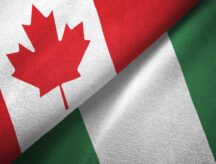Immigration fuels Canada’s highest population growth since 1957
According to Statistics Canada, Canada’s population has soared, reaching an estimated 40,528,396, a figure which includes citizens and residents, on October 1st, 2023.
Discover if You Are Eligible for Canadian Immigration
The surge reflects an increase of 430,635 people, marking a notable growth rate of 1.1% since July 1st, 2023. This increase represents the highest population growth in any quarter since the second quarter of 1957, when Canada’s population expanded by 1.2%. At the time, Canada’s population was only 16.7 million and growth was fuelled by post-war baby boom births and an influx of refugees following the Hungarian Revolution of 1956.
The population growth for the first nine months of 2023 has been the largest recorded, totalling 1,030,378 people. This includes the record-high growth witnessed in 2022.
International migration is the main source of Canada’s population growth
In the third quarter of 2023, the vast majority (96%) of the population growth was due to international migration.
The rest of the growth (4%) was the result of natural increase, or the difference between the number of births and deaths. In the coming years, the contribution of natural increase to population growth is expected to remain low due to Canada’s aging population, lower fertility levels and the high number of immigrants and coming to Canada.
During the third quarter of 2023, Canada welcomed 107,972 immigrants. From January to September 2023, immigration reached 79.8% (371,299) of Immigration, Refugees and Citizenship Canada's (IRCC) annual target of 465,000 immigrants.
Canada has also seen a surge in the number of non-permanent residents, reaching a historical net increase of 312,758 non-permanent residents in the third quarter alone, the highest quarterly since data on non-permanent residents became available in 1971. This increase can be attributed mainly to a rise in work and study permit holders, and to a lesser extent, an uptick in refugee claimants.
Provinces also experiencing population growth
With the exception of the Northwest Territories, all provinces, and territories experienced population growth. In particular, the third quarter of 2023 witnessed population growth rates exceeding the national average in Alberta (1.3%), Prince Edward Island (1.2%) and Ontario (1.2%).
In terms of interprovincial migration, Alberta stands out as the only province experiencing net gains, an increase of 17,094 in the third quarter of 2023. This marks the fifth consecutive quarter with gains exceeding 10,000, a trend not seen since 1971.
Most of Alberta's gains have been attributed to interprovincial exchanges with Ontario and British Columbia. In comparison, British Columbia faced its first five consecutive quarters of interprovincial migration losses since 2013.
Ontario, despite ongoing net losses in interprovincial migration since the first quarter of 2020, displayed a smaller net loss in the third quarter of 2023 (-5,952). The Atlantic provinces, in contrast to the growth observed during the COVID-19 pandemic, experienced slight or negative net interprovincial migration, largely due to a decrease in migrants moving from Ontario to the Atlantic provinces.
Immigration Levels Plan 2024-2026
On November 1st, Canada released its Immigration Levels Plan 2024-2026. The Immigration Levels Plan acts as the guideline for the number of new permanent residents who will be admitted into Canada over the next three years under each of the three immigration classes: economic, family, and humanitarian.
In 2024, Canada will target the admission of 485,000 new immigrants. In 2025 and 2026, Canada will look to welcome 500,000 new immigrants in each year.
Canada will look to welcome about 281,135 immigrants under the economic class, or 58% of the annual target in 2024. By 2026, this will rise to 301,250 immigrants, or 60% of the annual target.
In particular, Express Entry and Provincial Nominee Program (PNP) targets are set to rise. The Express Entry target will be 110,700 permanent resident admissions in 2024 and rising to 117,500 immigrants in each of 2025 and 2026. The PNP target will be 110,000 immigrants in 2024, rising to 120,000 in 2025, and another 120,000 in 2026.
- Do you need Canadian immigration assistance? Contact the Contact Cohen Immigration Law firm by completing our form
- Send us your feedback or your non-legal assistance questions by emailing us at media@canadavisa.com







